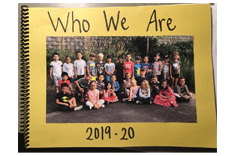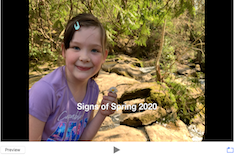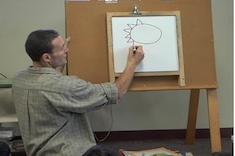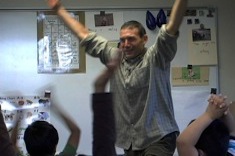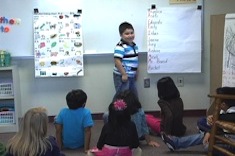During morning arrival a student came up to me and shared that her family had gotten a new cat over the weekend. I responded with the excitement that a new pet deserves and reminded her that she was welcome to bring in a picture of the cat to add to our pets book. She smiled big, pulled her arms out from behind her back, and held up a picture of her cat! She already knew that we often add pages to our class books, particularly our book of pets. I gave her the page template, and she immediately began working on the new page. I added it to the book during lunch.
At the beginning of the year, I try to get to know my new students quickly while simultaneously getting them reading and writing right away. I have found class books to be one of the best ways to accomplish these important goals.
We Have Pets!
In my introduction letter to students and parents, I share some information about myself and always highlight my dog, Duke. I invite students to share if they have a pet and to draw or bring a picture of their pet to school. In the first weeks, we introduce these pets and create a class book.

Working as Writers: Students are practicing writing their names and using sound spelling to label their pet’s name.
Working as Readers: Students are learning to read their classmates’ names, and pet is becoming a snap word. Students may also be trying to read the name of the pet conventionally and are recognizing that pictures can have a label.
Building Community: Students are learning about each other and making connections. Pets can give students an entry point to share with the class or to begin a conversation with one another.
We Speak Other Languages!
I ask students to share other languages they speak and invite them to teach us how to say hello in that language. Some students use their travel experiences to recognize that they know a little bit of another language, and I honor that as well! We add hello in the other language to a speech bubble and position it with the student’s photo. We create another book to read together. Sometimes we create a poster instead. I always want to honor spelling and correct character formation for languages that use characters, so often this speech bubble goes home so students can have family support as they write hello.

Working as Writers: Students are writing in their first (or second) language.
Working as Readers: Students are observing different languages and learning that written language can look different.
Building Community: Students are recognized for their language assets and are building connections to others who speak the same language. We are building connections with families because families are involved in helping students write their speech bubble. I find that students and their families usually feel honored that their home language is recognized and valued.
Friends Forever
I have used this page template for years! During the first week of school, I walk through each sentence frame with the class as we fill out our own information. It can take some time, but it is worth it. I compile the pages into a book that represents each child in the classroom. Friends Forever is a well-loved book each year and is read over and over in pairs and small groups. Students also search for Friends Forever books that their older siblings are in from previous years. I am continually charmed when students come back to visit years later and ask to see the book from their year. We ooh and aah, and giggle a bit too, at their six-year-old faces. It’s like a mini yearbook from their year in first grade.

Working as Writers: Students are guided to write the page, line by line, as a class. Students are writing to share their thoughts. Students are getting the chance to practice writing familiar words (their names) and an opportunity to try to spell unfamiliar words based on their letter-sound knowledge.
Working as Readers: With the sentence stems, students are practicing reading some snap words, and depending on their ability to read conventionally, they can read their friends’ responses. Students often read the book with a friend and use the repetitive text to choral-read and perhaps get guidance on reading their friends’ writing.
Building Community: Students are getting to know each other and making connections. Partner-reading this book builds friendships and camaraderie.
Who We Are
This is a book that we add to throughout the year when we decide something needs to be recorded. I start it right away with some basics, like their names and birthdays, but I have plenty of blank pages to add our ideas as the year goes on.

Working as Writers: Students start writing basic information, such as their names, to share with their friends. As the year progresses, students write more to record and share their thinking about various topics, such as holidays they celebrate, family information, and classroom and/or school events.
Working as Readers: Students practice reading their classmates’ names. As the year goes on and more entries are put in the book, students read more, using their reading skills and background knowledge to work through the text.
Building Community: Our community continues to develop throughout the year and is recorded in this beloved book. Students love to look at the first pages of the book and compare them with pages that come later. There is a lot to learn about their classmates, their families, and their traditions in this book.
Our Tree
I have a lovely tree outside our window that we observe and talk about throughout the year. I’ve added a hummingbird feeder to get winged visitors, and sometimes we add other bird feeders as well. I use the tree as a springboard to talk about trees, nature, seasons, and our earth. We keep a tree book filled with blank pages to record anything about our tree or the trees in our neighborhoods.

Working as Writers: This book is a journal and has opportunities for any students to share experiences, noticings, and knowledge. Students begin by labeling pictures using sounds spelling. As their skills develop, so does their spelling accuracy and volume. Students are learning the flexibility of journal pages and the value of recording what they notice and wonder.
Working as Readers: Students are getting the opportunity to read their classmates’ thoughts and ideas, beginning with labels. Students are reading their classmates’ pictures, photos, and drawings, and their thoughts and reflections.
Building Community: Students are getting familiar with each other, their thoughts, and their interests as natural scientists and as writers. Students are noticing the world around them and sharing those thoughts with their classmates.
Class books are a way we instantly become active readers and writers. As the year goes on, we continue to use class books as a way to share and to build our community.

